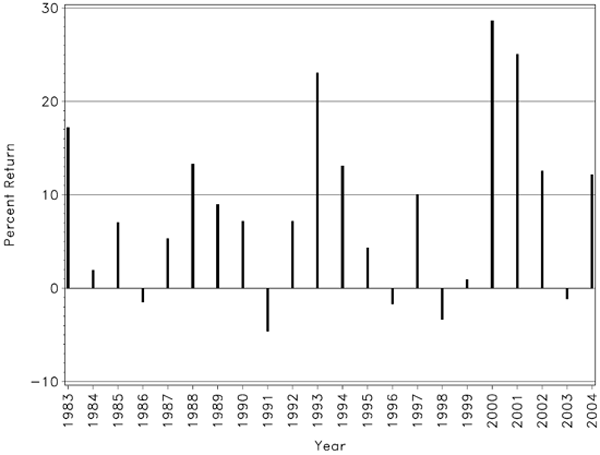What can small-trade volume tell us about the behavior and success of retail investors? Two December 2005 papers tackle this question. In a paper entitled “Small Trades and the Cross-section of Stock Returns”, Soeren Hvidkjaer investigates the effect of retail investor trading behavior on stock returns by studying intermediate-term and long-term returns for stocks with small-trade buying or selling pressures. In a paper entitled “Do Noise Traders Move Markets?”, Brad Barber, Terrance Odean and Ning Zhu offer a similar study, adding an analysis of the short-term returns for stocks with small-trade buying or selling pressures. Their joint findings are:
Using data for New York Stock Exchange and American Stock Exchange common stocks during 1983-2004 and for Nasdaq stocks from 1993-2004, Soeren Hvidkjaer determines that:
- Stocks with intense small-trade selling volume over the past several months outperform stocks with intense small-trade buying volume from the first month after portfolio formation up to three years later. In other words, stocks accumulated (distributed) by retail investors become relatively overvalued (undervalued) and therefore subsequently underperform (outperform).
- Stocks with high small-trade buying and selling pressure tend to have high turnover of shares.
- Stocks with strong small-trade buying (selling) pressure tend to have low (high) book-to-market ratios and high (low) past long-term returns.
- Institutions tend to trade against small-trade buying and selling pressures, although this tendency has been either weakened or obscured by new institutional trading programs in recent years.
The following chart, one of several interesting ones in this paper, shows the difference between the annual returns of stocks with high small-trade selling pressure and stocks with high small-trade buying pressure. The level of small trade pressure is based on six months of history. Returns are based on six-month holding periods from two to seven months after small-trade pressure measurement. It shows that stocks heavily sold by retail investors outperform stocks heavily bought by retail investors in 16 out of 21 years, often by a wide margin.

Using tick-by-tick stock trading data for the period 1983-2000, Brad Barber, Terrance Odean and Ning Zhu determine that:
- Trade size is a reasonable proxy for the trading of individual investors.
- Individual investors herd, notably buying (selling) the same stocks contemporaneously.
- Stocks heavily bought by individuals one year underperform stocks heavily sold by 4.4% in the following year. This spread grows to 13.5% for stocks most heavily traded by individual investors.
- Stocks heavily bought (sold) by individual investors one week earn strong (poor) returns in the subsequent week. This pattern persists for three to four weeks and then reverses during the subsequent several weeks.
- Stocks heavily bought (sold) with large trades one week earn poor (strong) returns in the subsequent week.
In summary, if you want to make money following the retail investor herd, you have to get in and out within weeks. For longer-term outperformance, bet against the herd.